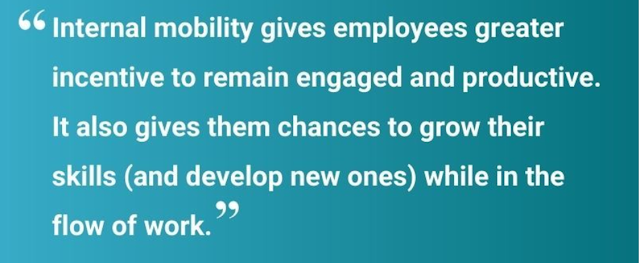Is Transformational Leadership being essential for Organizational Leadership growth?
“We’ve moved from digital products and infrastructure to digital
distribution and Web strategy to now into more holistic transformations that
clearly are based on mobile, social media, digitization and the power of
analytics and we think it’s really a new era requiring new strategies.” - Saul
Berman | IBM
Transformational leadership is a theory that says the leader
works with the team to identify what changes are necessary to improve
conditions. Together they create a guide and then act collaboratively to
execute it.
It is thought that transformational leadership boosts motivation, morale and job performance. That’s because the process supports and incorporates the team members, giving them a sense of power in directing the work. This makes each person a role model, inspiring their peers to engage similarly.
THE CONCEPTS OF LEADERSHIP AND TRANSFORMATIONAL LEADERSHIP
Leadership
is emerged from the advent of social life. Some people are put together and
begin their social life and influence each other. Transformational leadership
is achieved when leaders and followers motivate each other for higher
motivation and morality. These leaders have better relationships with their
supervisors. They help the organization more than leaders who act transactional
and they create more value for the organization. Transformational leaders
motivate their employees to do more than what is sited in their employment
contract and they focus on the employees’ higher level needs. These leaders act
as mentors and advisors and pay attention to personal development, learning,
and supplying the needs of the employees. They provide challenge, a sense of
mission, broader perspectives, respect, and trust for the employees, and they act
as role models for their employees. They create an atmosphere of trust and
motivate employees to work for the organization beyond their self-interests
(Khorshid & Pashazadeh, 2014, p. 7).
CHARACTERISTICS OF TRANSFORMATIONAL
LEADERS
Figure 01
An Real Example of Transformational
Leadership: Using the Four I’s !!
So let’s put these “four i’s of transformational leadership”
into context. Let’s say there’s a marketing manager, named Becky, who’s in
charge of hitting a software signup goal by the end of the month. She’s in
charge of leading a team of four, and she wants to be a transformational leader
who inspires everyone in her team to be their individual best, propelling the
whole to success.
To exemplify idealized influence, Becky gets to work earlier
than everyone on her team. She’s dressed professionally, and is always focused
on the goal. Sure, she’s genial and talkative during the lunch break, but when
it’s time to work, she is a model of productivity.
Becky understands that being a transformational leader is
more than just leading by example, so she makes sure to inspire and motivate as
well. She starts each morning by sharing an inspirational quote with her team,
and as the they approach their goal, Becky shares her excitement and promises
incremental rewards, like a lunch outing if they make marked progress that
week.
To keep the team intellectually stimulated, Becky opens up
about the problems that appear during the project. She seeks their advice to
help define and overcome any problems. This keeps the team feeling validated
and an important part of the solution. Of course, Becky treats every idea with
respect and doesn’t show favoritism.
Each team member is just as important as the other, as a
chain is only as strong as its weakest link. As such, Becky makes time for each
of her team members, and listens to their concerns and problems. She always
strives to be available, and never frustrated by the desire for help. She heeds
their worries and adjusts the project workload to suit each team member’s
unique skill.
Pros of Transformational Leadership:
Conclusion
In summary, transactional leadership plays an important role
in organizational dynamics by emphasizing clear roles, responsibilities, and
well-defined structures. This leadership style promotes efficiency and
stability by emphasizing rewards and results, aligning individual and team
goals with the overall organizational goals. While effective in some contexts,
transactional leadership can limit creativity and innovation, potentially
hindering the ability to adapt in rapidly changing environments.
References
Alfes K., Shantz A. D., Truss C., Soane E. C. (2013). The link between perceived human resource management practices, engagement and employee behavior: A moderated mediation model. The International Journal of Human Resource Management, 24(2), 330–351.
Bass B. M. (2015). Transformational leadership: Industry, military, and educational impact. Mahwah, NJ: Erlbaum.
Chua J.,
Aoko O. B. (2019). Employees’ self-determined motivation, transformational
leadership and work engagement. Journal of Management & Organization,
1–21. Advance online publication. https://doi.org/10.1017/jmo.2018.74
Alfes K., Shantz A. D., Truss C., Soane E. C. (2013). The link between perceived human resource management practices, engagement and employee behavior: A moderated mediation model. The International Journal of Human Resource Management, 24(2), 330–351.
Bass B. M. (1998). Transformational leadership: Industry, military, and educational impact. Mahwah, NJ: Erlbaum.
Chua J.,
Ayoko O. B. (2019). Employees’ self-determined motivation, transformational
leadership and work engagement. Journal of Management & Organization,
1–21. Advance online publication. https://doi.org/10.1017/jmo.2018.74
4.







Transformational leaders focus on helping members of the group support one another and provide them with the support, guidance, and inspiration they need to work hard, perform well, and stay loyal to the group.You have well explained all those things.
ReplyDeleteThis article emphasize on leadership style which HR manager can replicate same to his role.
ReplyDeleteTransformational leadership's highlights its core characteristics and a practical example, offering a balanced view of its pros and cons. The piece underscores how transactional leadership, while efficient, might hinder adaptability and innovation.
ReplyDelete